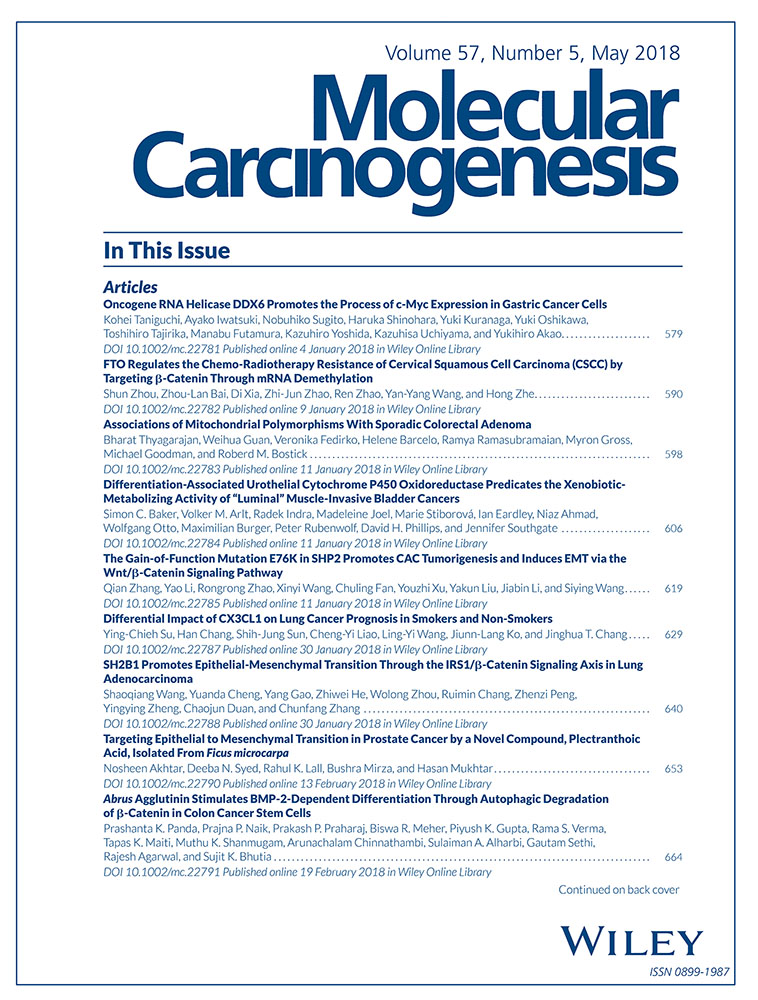Targeting epithelial to mesenchymal transition in prostate cancer by a novel compound, plectranthoic acid, isolated from Ficus microcarpa
Abstract
Epithelial-to-mesenchymal transition (EMT) plays a crucial role in prostate cancer (PCa) metastasis. This has led to a surge in the efforts for identification of safer and more effective compounds which can modulate EMT and consequently inhibiting migration and invasion of PCa cells. We reported previously that Plectranthoic acid (PA), a natural compound isolated from the extracts of Ficus microcarpa, has the capability to induce cell cycle arrest and apoptosis in PCa cells. Here, we determined the effects of PA on EMT, migration, and invasion of PCa cells. Inhibition of EMT induced by different mitogens was effectively inhibited by PA treatment with subsequent decrease in migration of PCa cells. Employing a PCa cell culture model of TGF-β-induced EMT, we showed that PA has the ability to reverse EMT. PA treatment was associated with induction of epithelial markers and decrease in the expression of mesenchymal markers in PCa cells. Proteomic analysis identified Rac1 as the major cadherin signaling protein modulated with PA treatment. In silico studies indicated that PA docked to the CH domain of NEDD9 protein with an estimated free binding energy of −7.34 Kcal/moL. Our studies revealed significant inhibition of Rac1/NEDD9 pathway in PA treated cells thereby providing a molecular basis of the inhibitory effect of PA on PCa cell migration and invasion. In conclusion, our data suggest that PA should be investigated further as an adjuvant treatment in human PCa cells, given its potential as an anti-invasive agent.




